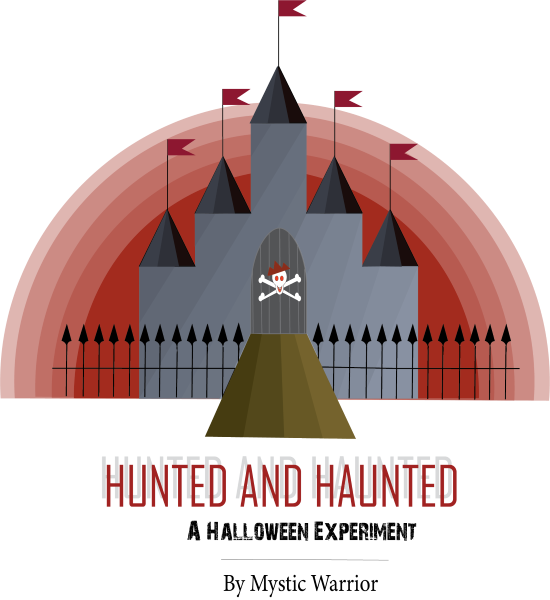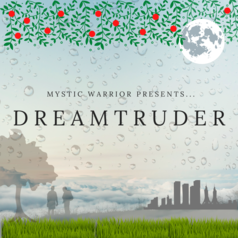Mystic_Warrior, The Grandmaster of the Written Word
Member Since
Last Activity
EXP Points
Post Count
Storygame Count
Duel Stats
Order
Commendations
Profile picture from the best artist, MHD! Go check out her commissions and artworks.
(Close up of profile picture)
Hi there! I'm Mystic Warrior, a writer of many words, as evidenced by my storygames, reviews and often unsolicited writing advice. Feel free to browse my collection of works below.
Here are some storygames you should read:
- Constellaris Court
- These Shackled Souls
- Spell of Slumber
- In Moonlit Waters
- A Hunted and Haunted Halloween.
- Fall to Hopelessness
- Breaker
- Dreamtruder
Here's a walkthrough for A Hunted and Haunted Halloween: link.




Trophies Earned















Storygames
For End Master's Manifest Destiny Contest.
"Welcome to the experiment. A man is dead, and you have to find his killer. There will be a list of rules in your room once this briefing is over, but all you really need to know is this: There are five of you, but only one can solve the mystery. You will be given five days. Each night, one of you will die - no more, no less.
Ready? Even if you're not, it doesn't matter. You're in my world now."
This is also a War on Intfiction contribution.
Note: Aside from a few references to Dreamtruder characters/ events, this storygame is a standalone.
It is my first time writing a mystery storygame on this site, so I would appreciate if you could leave feedback on whether this mystery was too easy/ difficult to solve. If you find yourself stuck, don't hesitate to message me directly. That being said, do not feel discouraged if you are bewildered at first; as you progress further in the game, the clues and secrets would make everything clearer. Eventually, the secrets you find would allow you to make sense of most clues except a few, and these would point to the killer.
Make use of the notebook, which would keep track of the information you gained from the interviews and the secrets you may find out. Also, check the item descriptions of all the objects since some of these would have to be 'used' in order to access some clues.
Once you've solved the mystery, there are 3 possible endings you could get. Only one of these actually results in returning back to the 'real world'. If you're looking for this 'true ending', it requires you to play through the last of the five days rather than just skipping to the end and guessing the answer.
Good luck surviving the Halloween experiment!
Beneath the seas, hidden from the Ones Above, our society goes about our normal, routinely lives. I cannot help but feel bored with all that is going on, until I find the letter. A letter that sends me on a journey to deliver a magical item to the group of people that have been villainized over the years, the letter that challenges everything I thought I knew. But which side is on the side of good? How can I break out of the only world I have ever known? Should I join the heroic villains or the villainous hero? I have finally gotten the adventure I always needed, but not exactly the one I wanted.
(Edit - note from the author: I'll be going through the process of fixing any bugs/ problems in this storygame soon, like the inescapable loops, so apologies for those who encounter these or any other issues caused by the upcoming changes).
Note: This game was created for Camelon's break contest. During the part where a specialist is assigned to the breakers, there are three different paths (Lawbreaker, Breaker of People and Breaker and Enterer). Due to time constraints, for those who would like to know, Breaker of People is the longest path, followed by Lawbreaker and Breaker and Enterer, but aside from the epilogues, it all leads to the same chapter 5. As before, feel free to comment or message me if you encounter any issues or problems that I should fix.
For EndMaster's Edutainment Contest
You are Kassandria North, a barrister who has been abducted by an alien!
Act as an advocate in the galaxy's central hub of justice. Deal with challenging clients, cross-examine alien witnesses, and do what it takes to win your case.

Could a planet built on the foundations of equity and law truly exist?
This storygame features 5 court cases (plus a bonus one!) and you will earn a profile badge if you complete them all.
Disclaimer: While this storygame is based on the English legal system, many creative liberties have been taken. This is not intended to be a replacement for legal advice. Moreover, the English law is dynamic and evolves as societal norms change, hence the concepts presented in this storygame may eventually become outdated.
Constellaris Court | Trailer
"The delicate balance between the dream world and the real world is disrupted. You intruded and messed up the dream of an innocent. By talking about this with an Unknowing, the possibility of the dreamstage being unveiled is now greater than ever. The Jury has made a decision - we have no choice but to send you to The Jungle..."
Life was hard, balancing work and relaxation. Then the nightmares came, and all I ever wanted was to be free of them. Yet, I never accounted for this - finding out the truth about the dream world, exploring the vast plane of the imagination...only to be whisked away to the longest nightmare ever.
Think a jungle's bad? Try a fictional jungle, where literally anything can happen, and the most creative minds have conspired to give you a hard time.
Note: This game was created for Mizal's 'Welcome to the Jungle' contest. There are several epilogues, and while the main one is the normal Dreamtruder path, others include Dream director, Dreamcaster, Dreamediator, and Dreamhero. Fancy a challenge? Try completing the Jungle challenge without picking up any dreampowers - it's possible, but requires a bit of thinking and planning ahead. Also, for some items, click the 'use' button as a link would not be provided (if this is the case, it would be specified in the object description)
Since this would be my first published storygame, I am still relatively new to this. Feel free to message me or spam the comments if you encounter any issues, have any suggestions for improvement, or just have something you want to say.
Enjoy!
A quest doomed from the start. A man with an unwavering yet unusual moral compass. A daughter in the darkest depths of the night sky.
It isn't truly over until all hope is lost.
'Good and evil, heroes and villains… they are all fantasies created by the world. There are only two types of people: the people you care about, and the people you don’t.'
Arnold Cyzila's best life may have been long since over, but he would do anything to save his daughter from the clutches of her confinement. Even stealing an airplane, killing the innocent, and entering a dangerous world where death is almost guaranteed.
[Warning: There are some mentions of murder, deaths and several dark themes, so if those things make you uncomfortable, perhaps it is better not to read this story.]
Note: I initially did not plan on joining this contest, yet I'm glad I did since it has motivated me to publish a new storygame. It is related to Dreamtruder in a way… well, you’ll see. While this story may not be as long as my previous two, it was interesting to write a shorter project.
Just like all my other storygames, commenting and rating this story are both highly welcomed and appreciated. Also, as I have used quite a lot of variables in several fight scenes, let me know if you ever encounter a page where there are no visible links.
Lastly, there are a few different epilogues but the 'main' one would be an epilogue which mirrors the start of the story (you'll know it when you see it). There are three possible ways to reach that. Even though I may consider it to be the true ending, it is not a typical happy ending.
For EndMaster's Prompt Contest
Prompt: A story involving an old Oriental style setting
A simple quest for revenge turns into a deadly competition.
The Shi Empires, governed by the Ten Emperors, appear to be undefeatable. But Liu Longyi's desire to avenge Mother tranports her to four deadly battles, marked by the sudden appearance of a chaos deity.
As she battles competitors for the throne, Liu Longyi learns the truth about the mighty Shi Empires, along with the most closely guarded secret of Yue Palace.
Author's Notes:
1. This story makes use of delayed consequences, so replaying would grant different outcomes, even if they aren't always visible at first.
2. There are some instances of violent and slightly mature content, so reader's discretion is advised.
3. If you prefer to read the storygame in the same browser, you could click the title page instead of the 'play' button.
Hope you enjoy the storygame!
For EndMaster's Prompt Contest 2
Prompt: A story involving fairies in some way

"Save your breath. We both know how this story ends."
As a spellsinger from an illustrious family, Aubrynne Spelwinter has always sought greatness. Yet, in an attempt to shatter a notorious curse, she becomes one of its casters.
In seven days, the curse will take effect. However, Aubrynne's mission leads to an unlikely alliance with the Cursed King, with whom she races against the clock to save her kingdom from conquests and faceless enemies.
Author's notes:
1. There are 5 epilogues and it'll be obvious which the 'main' one is.
2. This is a retelling of a classic fairytale, Sleeping Beauty, although aside from a few plot points, it features unique characters, settings, and narratives.
3. If you prefer to read the storygame in the same browser, you could click the title page instead of the 'play' button.
Hope you enjoy the storygame!
Link to video trailer: https://imgur.com/9T3UWTW
For End Master's Prompt Contest 4
Prompt: A story about being a collector of very rare exotic things and/or unique things
Link to a video trailer
Bly’therra of the Illusions
Genie of the Lamp • Collector of Souls • The Sly Shapeshifter
Ever since she was shackled to her lamp, Bly'therra wants nothing more than to reclaim her freedom. This leads her to strike an ambitious bargain: in three days, she must grant three wishes to the Sultan's future heir and collect his soul.
Zasper Aldaricus
Son of the Sultan • Master of Disguise • The Traitorous Thief
As the fourth son of the Sultan, Zasper desires to prove himself worthy by winning his father's title. To do this, he has to compete against his brothers to form an unbreakable alliance with a neighboring kingdom.
Author's Notes:
- This storygame features two points of views. The choices you make in one point of view can—and will—affect the other story.
- Although this is a retelling of Aladdin, the plot, characters, and overall narratives deviate from the original tale.
- If you prefer to read the storygame in the same browser, you could click the title page instead of the 'play' button.
Hope you enjoy the storygame!
If you don't like letters, extremely short stories or cliched moral lessons, don't read this. I found it when I was browsing through the old storygames I had created a long time ago. If I'm not mistaken, this was made for Mizal's Tiny 'Topias jam although I never really thought it was good enough to add to the thread. I don't think I'll publish this, but it's completed if anyone happens to browse my profile and wants to read it.
On a dark and chilly night, you visit the Skeleton to ask for hints in order to solve the mystery of 'A Hunted and Haunted Halloween'.
If you find yourself stuck while trying to complete A Hunted and Haunted Halloween, this is the guide for you! Since it is a walkthrough, there are bound to be spoilers, so I recommend reading the storygame before referring to this.
Do let me know if you find any inconsistencies between the storygame and this walkthrough. As this would remain unpublished, I should be able to fix errors rather quickly.
That's all from me. Enjoy!
Articles Written
A Guide To Actually Completing A Contest StorygameHow to Write Meaningful Reviews
Mastering Character Dynamics
Recent Posts
Another Episode of Everyone Hates Cel on 12/19/2025 9:08:27 AMImgur is banned in the UK now too, so I've lost access to all my pictures there and unfortunately have to replace my storygame images. Using a VPN means I can still see images but I still can't access Imgur's site.
Secret Santa 2025 on 12/18/2025 5:41:07 PM
As a distraction from the unwholesomeness in other threads, here are some updates!
- Sherb and Sent have received
a picture spying on them at a tavernan artwork! Just so it's clear, this isn't from either of their Secret Santas - Anthraxus has received his Secret Santa gift! The hint: “Here’s an ambling for you now.”
- I would also like to draw attention to the brilliant artwork that has appeared in my column, I wonder who this mysterious and artistic and insanely talented gifter could be, anyone has any ideas?
That's it for now, happy guessing!
"The R slur" and other gamer words on 12/18/2025 5:21:44 PM
I suggest you challenge one of the 'noobs' to a Thunderdome duel to let out your rage productively. You will either prove your worth as a writer or descend further into lowercase shame.
Secret Santa 2025 on 12/18/2025 5:14:37 PM
I've added a category! I just felt bad receiving presents if I wasn't giving out gifts, though maybe the event itself is a gift to CYS members.
Secret Santa 2025 on 12/18/2025 5:14:25 PM
Not sure how I missed this post, but hopefully the 5 commendations rule would be effective at keeping out the flakes next year. As for this year, I can't reveal too much but let's just say I have a reason to be grateful some newer members are in :)
Do you have Retardation? (Part 2) on 12/18/2025 10:10:32 AM
Now we just need to wait for End to come online and you'll be given your reward.
Do you have Retardation? on 12/18/2025 10:06:47 AM
As long as everyone limits the spamming to this thread I don't mind whatever happens lol.
Do you have Retardation? on 12/18/2025 9:59:58 AM
@Naz_Cant_Think
Do you really need the @Fillitup alt? Let me know which one you prefer using so I can ban the other.
Who is your Secret Santa? on 12/17/2025 4:19:53 PM
No worries! Those are some well thought out observations, although I can't verify the accuracy without giving anything away.
Who is your Secret Santa? on 12/17/2025 4:16:01 PM
Since you're new here, I'll help you out a bit: the person who drew Mizal's Wicked art, Sent's mistletoe hostage art and Ace's ninja turtle art is your Secret Santa (just giving extra presents)! But still, who would have guessed, it's not like there's very similar artstyle or anything like that, right?
Chris' Secret Santa has not decided on a clue yet, so maybe that lack of a clue could be a clue in itself.








